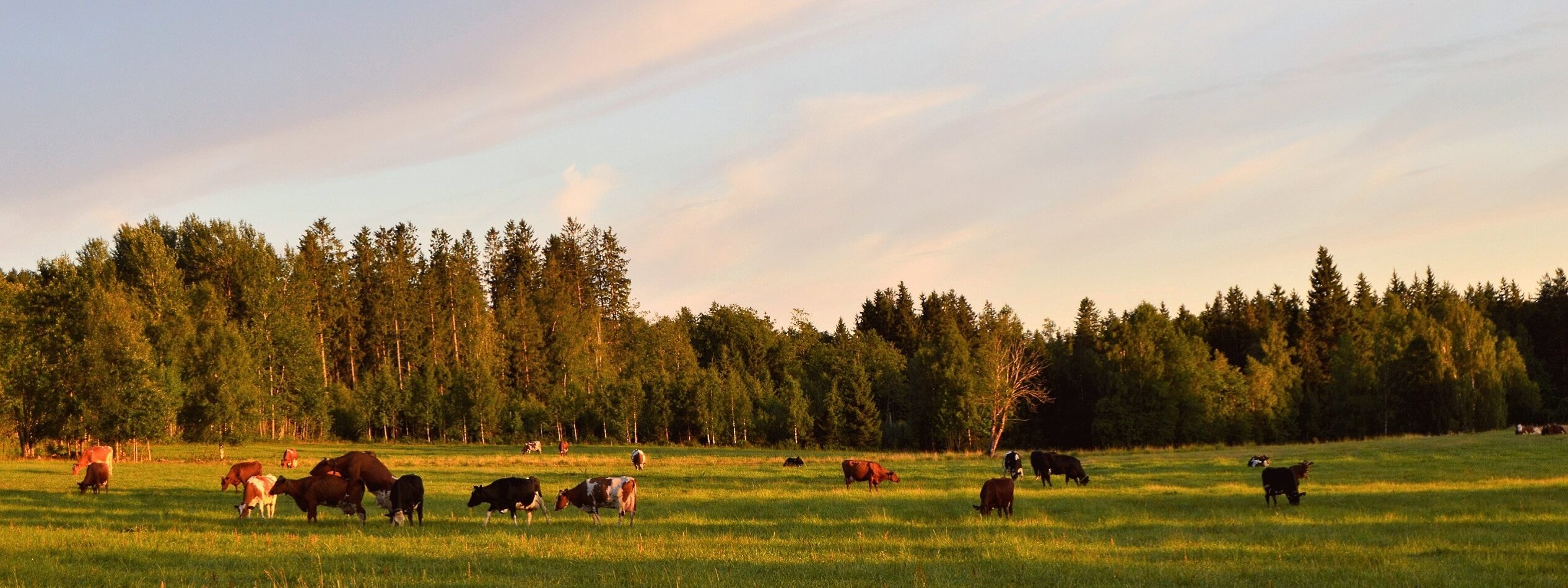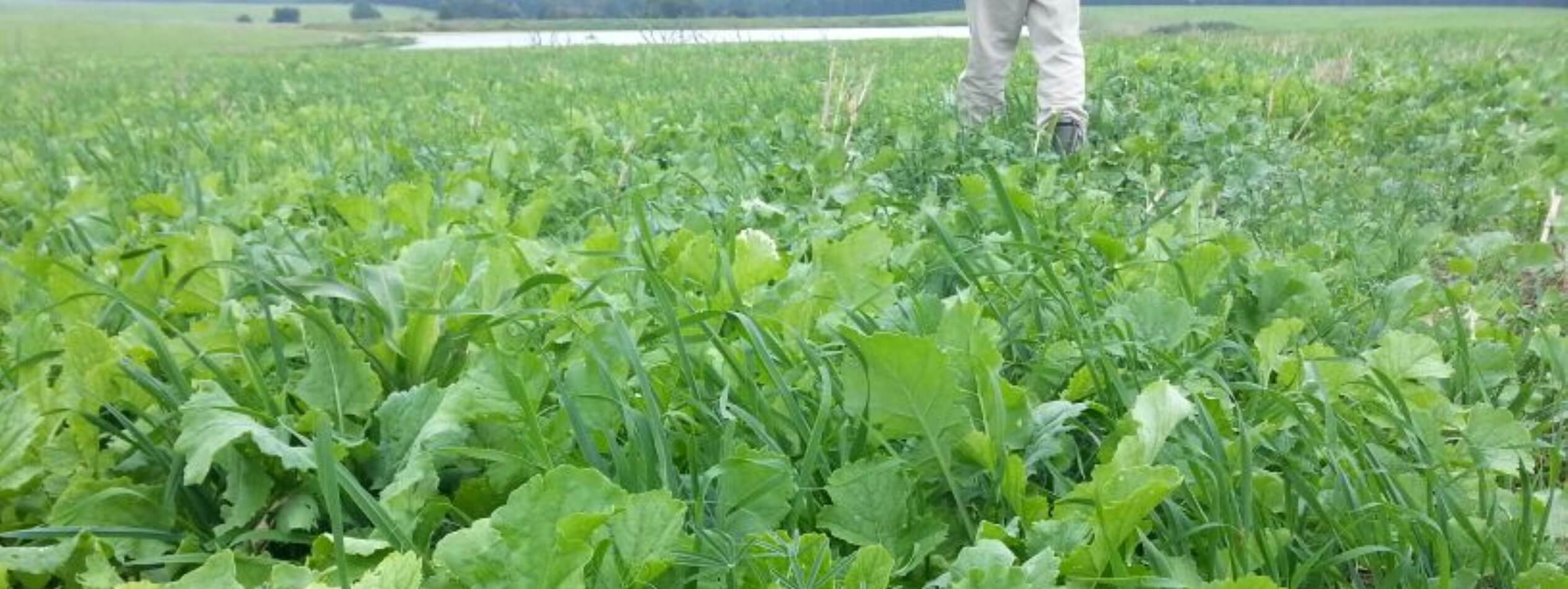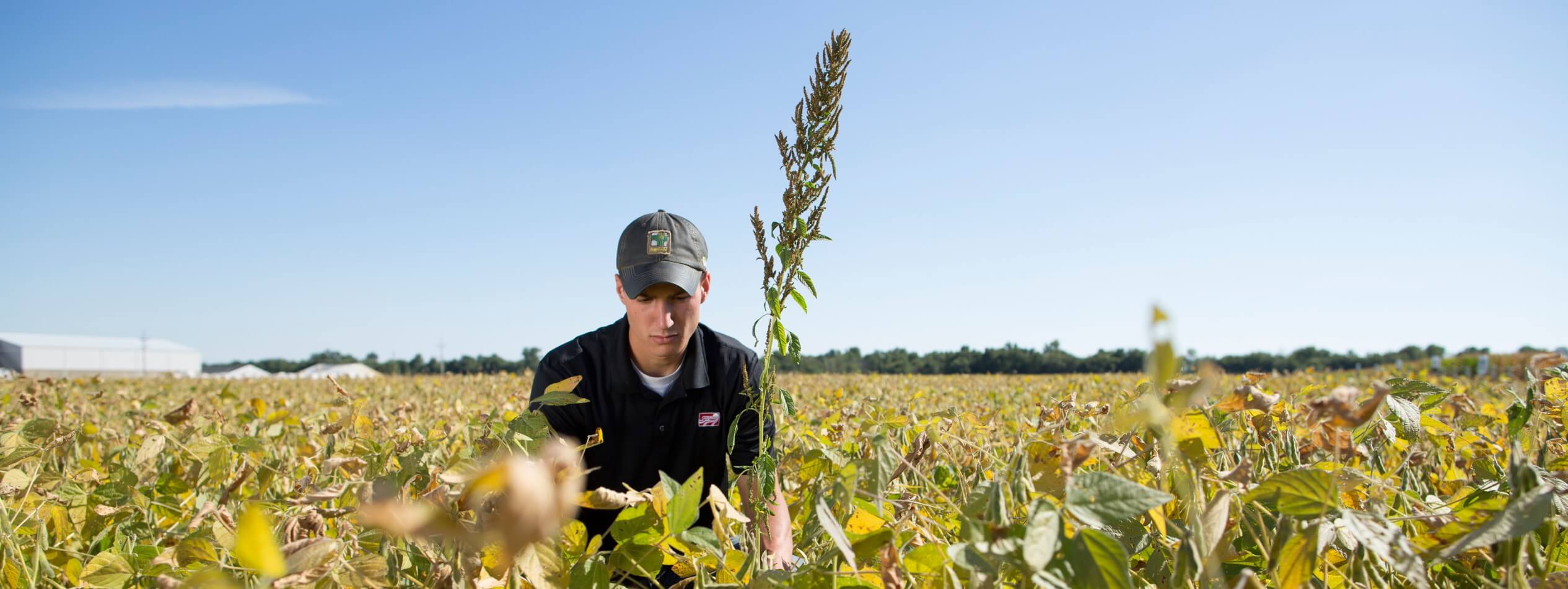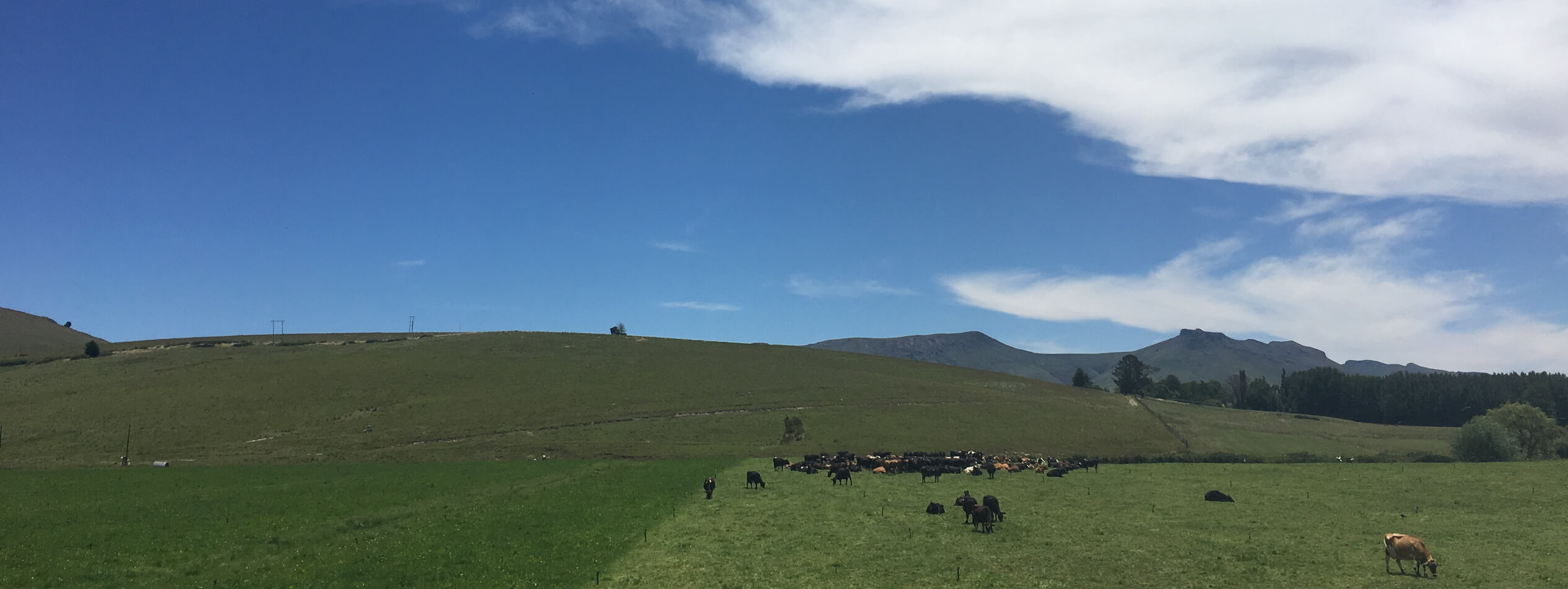Understanding regenerative agriculture
There has been a lot of hype surrounding regenerative agriculture lately. It is very much the new buzzword in agriculture. Unfortunately, from my perspective, I think there have been a lot of miscommunications and misperceptions of what will be beneficial for the future of global agriculture and global food security.
One of the first things that needs to be clarified is, what exactly is regenerative agriculture? There is not a single definition, but broadly it is an approach to farming that seeks to rehabilitate ecosystems to their natural state, thereby restoring ecosystem services. Regenerative agriculture promotes working with nature rather than against it. It aims to reconnect the symbiotic relationships that exist between animals (livestock), crops, and grasslands. The main goal of regenerative agriculture is to improve the health and biodiversity of the agroecosystem. Regenerative farming is an approach and mindset towards agriculture, rather than a prescribed methodology.
Due to this relatively broad definition, and because the main proponents of regenerative agriculture have been farmers and consultants, rather than academics, it is sometimes maligned by traditional agriculture as being pseudo-science, or baseless. We will discuss this in greater detail later in the article. The important thing to note is that I believe such criticisms often have merit since not all practices branded as “regenerative” have evidence of success for agriculture and/or environmental sustainability.
The value of regenerative farming is the desire of farmers to reduce their environmental impact and align their practices with the ecosystem services that are inherently part of all ecosystems. But this is not a new concept at all. In fact, the term regenerative agriculture was coined in the early 1980’s. The main cause for the increase in the popularity of regenerative agriculture is that farmers, consumers, and other stakeholders have recognised the destructive nature of many conventional farming practices, and the resulting degradation of agro- and natural ecosystems. This is evidenced by global climate change, biodiversity loss, water pollution, and soil degradation.
Terminology and semantics
I do not think that the destructive nature of conventional farming practices is much debated anymore. The debate, however, is around what should be done about it? This has led to people advocating for many non-conventional approaches to agriculture, such as:
- sustainable agriculture
- regenerative agriculture
- ecological agriculture
- agroecology
- organic agriculture
- permaculture
- conservation agriculture
- low-input farming
- holistic farming
- biodynamic farming
- climate-smart agriculture
These terms all refer to farming practices that aim to minimize environmental impact, preserve natural resources, promote biodiversity, and ensure long-term food security while maintaining profitability for farmers. In my understanding, I would group them all under the term sustainable agriculture, since I think that fits a broad definition for all of them. But that is not how many people view it. Many people have become fixated on the correct use of terminology, but it is largely semantics. An example is people who have said, sustainable agriculture is not good enough because we cannot sustain something that is broken. This is obviously a complete misunderstanding of the meaning of sustainable agriculture, but it is a nice-sounding comment to cause a reaction.
I think that debating the semantics is more distracting than it is helpful. If we can all agree that we share the goals of minimising environmental impact, promoting biodiversity, contributing to food security, being socially responsible, and long-term profitability, then I think we should rather unite around our shared goals. The contention often comes into the practices that will lead to these goals, but those can be rigorously debated, without causing unnecessary disunity if we can at least acknowledge that we have shared goals.
The principles of regenerative agriculture
Refocussing on regenerative agriculture, since it is more of an approach than a specific set of practices, there are some broad principles that are advocated for.
Minimising soil disturbance
Regenerative agriculture aims for minimal soil disturbance (especially from tillage) to preserve soil structure, soil moisture, and reduce erosion. This is often achieved through no-till or minimum-till farming practices.
Cover cropping and crop rotation
Cover cropping involves planting diverse crops between cash crops to help suppress weeds, improve soil health, promote biodiversity and reduce erosion. Crop rotation involves alternating the crops planted in a field to improve soil health, and to prevent soil-borne diseases, pests, and weeds from building up.
Diversity
Regenerative agriculture aims to promote biodiversity by planting diverse crops and/or pastures, intercropping, planting hedgerows, and incorporating livestock into farming systems. This helps to create a more resilient agroecosystem that can better withstand pests, disease, and weather events.
Building soil health
Farmers use practices such as composting, mulching, and applying biological inoculants, bio stimulants, and organic matter to improve soil health. This, in turn, improves plant health and reduces the need for synthetic inputs such as fertilisers and pesticides.
Integrating livestock
Integrating livestock into farming systems can help improve soil health by adding organic matter and nutrients to the soil through manure, and reducing the need for synthetic fertilisers. The inclusion of livestock makes the system more resilient, and profitable, by introducing another revenue stream.
Conservation of water resources
Farmers use practices to conserve water resources such as rainwater harvesting, reducing irrigation, improving irrigation efficiency, reducing groundwater pollution by applying fewer synthetic fertilisers, recycling wastewater and reusing it, and improving soil health to increase water-holding capacity.
Community and social well-being
Regenerative agriculture recognizes the importance of community and social well-being in achieving sustainable farming systems. It prioritises the creation of fair and equitable systems that support the well-being of farmers, farm workers, and local communities.
Overall, regenerative agriculture aims to create farming systems that are sustainable, resilient, and regenerative, and that support the health and well-being of people and the planet.
Challenges of regenerative agriculture
I do not think you would find many people who would disagree with the broad principles described above. You may find that there are additional practices that some would advocate for, but no list is ever exhaustive. So why then is there so much push-back on regenerative agriculture? I do not have a definitive answer, but I would speculate a few things.
The goal of reducing inputs is obviously inconvenient to suppliers and resellers of these inputs. I do not believe that there are necessarily nefarious intentions from people advocating for farming inputs. On the contrary, I believe many good people are advocating for their products because they really do believe that what they are selling can help farmers. The challenge I encounter often lies in the lack of recognition that each product is only really helpful in certain contexts, and is very seldom applicable across all farming systems and circumstances. But a general approach, such as regenerative agriculture, which advocates for the aggressive reduction in inputs, threatens these people’s livelihoods, and therefore they would naturally kick against it.
There are people, especially traditional soil scientists and agronomists, who philosophically disagree with the broad approach advocated for by regenerative agriculture. The main sticking point seems to be that the people challenging regenerative agriculture are completely sceptical of it being a sustainable solution to global food security. They just do not believe that it is possible to drastically reduce inputs and sustain food production at a level that will feed the world. This is where there is definitely conflicting evidence. It would seem as though, whichever side you choose in the debate, you will be able to find compelling scientific and anecdotal evidence for your perspective.
This is a complex topic that deserves a long discussion in itself. In essence, you have two perspectives. One party believes that sufficient food cannot be produced economically without agrochemical inputs (e.g., tillage, fertiliser and pesticides), since these are the drivers of higher yields. The other party believes that such inputs, and the associated practices, will result in such a level of land degradation and cost of production that sufficient food will not be able to be produced sustainably in the future. Both sides seem to be able to find evidence to support their claims. Thus, there is a bit of a belief-system issue here which is not easily solved. In addition to these two perspectives, you have another two non-associated perspectives. The one that there is sufficient food produced, but not sufficient distribution of this food to alleviate hunger, and the other that there is not sufficient food to support future demand, and therefore there needs to be an increase in agricultural production. As I mentioned, this is obviously a complex topic, which I am not doing justice to, but the point here being that it is an additional component to the: “what is the best approach to food production to ensure food security?” debate.
To me, this is indicative of the highly complex nature of farms and farming. I believe the warnings against farmers blindly following practices that have been implemented in contexts that do not relate to the one they are in, especially in terms of another country, are valid. On the other hand, I believe that traditional academics and agricultural research is also missing the progress that has been made on many farms. The outcome of this is that I have become a proponent of encouraging farmers to experiment with practices that resonate with them on a piece of land where they are willing for the experiment to fail. And further, that they do not draw broad conclusions from such an experiment, but rather that they treat all experimentation as continuous learning.
People who advocate for regenerative agriculture often use terminology such as “farming with nature”. Although I understand that what people probably mean by this is to farm in a way that facilitates, protects and benefits from ecosystem services and mutualist relationships where possible instead of artificial means. That is a noble approach, but it is not the impression that I often get. I have more often than not, gotten the impression that people are talking about farming in a way that is directly consistent with how nature functions. This is one of the sticking points for me when I start to disconnect with regenerative agriculture proponents. I believe that it is important to acknowledge that all agroecosystems are no longer natural ecosystems. As soon as we started putting up fences, planting foreign plants, introducing foreign animals, and implementing any other form of management, these stopped being natural ecosystems. In many farming contexts, the climate and geography do not facilitate optimised agricultural production. Examples of this are when you find large irrigated areas producing high biomass in desert areas or areas that have inherently poor soil which now support high-yielding crops and/or pastures. These areas have been manipulated, either by the addition of nutrients to the soil and/or the addition of water. In such areas, the goal cannot be to restore these farming systems to their natural state, as this would preclude profitable farming from taking place. Although this said, I do not believe that any of the principles of regenerative agriculture are not applicable to the successful transition towards more sustainable farming in these areas. I think the problem arises from the way that people talk about regenerative agriculture, rather than the principles on which it is based.
Conclusion
I believe in the overall goals of minimising environmental impact, promoting biodiversity, contributing to food security, being socially responsible, and long-term profitability in agriculture. I do not think it matters what we call it, but rather that the goals are emphasised.
Most importantly though, I believe that more sustainable food production will not be achieved by farmers simply implementing the supposedly correct list of practices. More sustainable production will only be achieved through a high level of execution of practices that positively contribute towards these goals. The practices and farming systems may vary from farm to farm, but as long as the practices produce a result towards the shared goals, then there will be progress in agriculture. And I believe that this will take a significant investment of effort, shared learning, humility, resources, and collaboration from every stakeholder involved in agriculture.
- A carbon footprint assessment for pasture-based dairy farming systems in South Africa - 2024-02-07
- What progress have farms participating with Trace & Save made over the past 10 years? - 2023-09-06
- Carbon footprint reduction over time: Lessons from pasture-based dairy farms in South Africa - 2023-09-04





